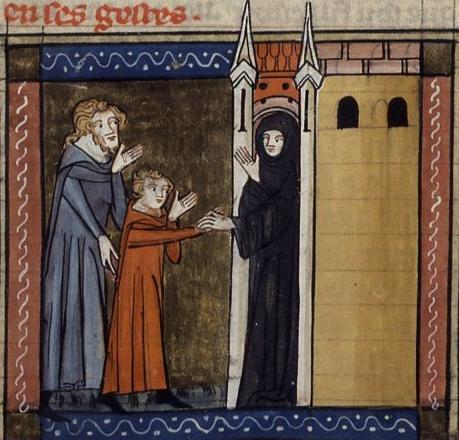
A St Andrew's Day fact: Scotland has produced the highest number of men who have a part of the gynaecological anatomy named after them. Three parts are named after Scotsmen. So let's do a thread of the parts and the men whose names they bear.
(before we start, let's address two questions. Denmark and Germany hold shared second place, having produced two men who have bits of the gynae anatomy named after them; there are zero parts named after women)
JAMES DOUGLAS (1675-1742), born in West Calder, is the namesake of the POUCH OF DOUGLAS. Also known as the rectouterine pouch, it's an extension of the peritoneum between the rectum and uterus, kind of forming a little fluid-filled pocket between these parts.
The pouch of Douglas is best known for nasty things happening to it like getting infected, cancer spreading there, being a common site for endometriosis. Douglas also has Douglasitis named after him, an inflammation of the pouch.
Douglas was a highly respected anatomist and physician, who was called upon to investigate a strange case of a woman giving birth to rabbits due to his skill. Obviously, the woman wasn't giving birth to rabbits because that's impossible, and Douglas exposed her scam.
As well as the pouch and inflammation of it, here's more things named after Douglas: a fold, a septum, a line, an abscess, Hannah Gadsby's 2019 Netflix special and, of course, Hannah Gadsby's dog.
ALEXANDER SKENE (1837-1900), born in Fyvie, is the namesake of SKENE'S GLANDS, also known as the female prostate or paraurethral glands). These glands are located around the lower end of the urethra which secrete a whitish clear fluid, known as female ejaculation.
Skene wasn't actually the first to describe the Skene's glands. That was Regnier de Graaf all the way back in 1672. But Skene wrote about them in English and trained a lot of gynaecologists, so his name stuck.
In his spare time, Skene published a romance novel and dabbled in sculpture, as well as enjoying a close personal friendship with J Marion Sims, the so-called father of modern gynaecology who performed human experimentation on enslaved Black women.
There isn't evidence that Skene personally participated in Sims's human experimentation on enslaved Black women, though he would have known about it. He liked Sims so much he sculpted a bust of him as a gift.
(more on Skene's pal J Marion Sims here. Content warning for torture and slavery)
https://twitter.com/vagina_museum/status/1353661528919179265
DAVID BERRY-HART (1851-1920), born in Edinburgh, namesake of HART'S LINE. Hart's line describes the marked change in skin texture between the more skin-like labia minora, and the smoother skin of the vulval vestibule (the bit between the lips and under the clitoris).
Berry Hart was a much-honoured gynaecological surgeon who also wrote extensively on Mendelian inheritance. He also practiced surgery, and was the first surgeon in Scotland to successfully operate on a ruptured ectopic pregnancy in the Fallopian tubes.
Playwright and author Tess Berry-Hart is a descendant of David Berry Hart: they're his great-grandchild.
And finally, since we're talking Scotsmen, we might as well mention John Aiken, the Scotsman who invented the chainsaw to assist with childbirth. Here's more about him and his work
https://twitter.com/vagina_museum/status/1456579549173633025
• • •
Missing some Tweet in this thread? You can try to
force a refresh






